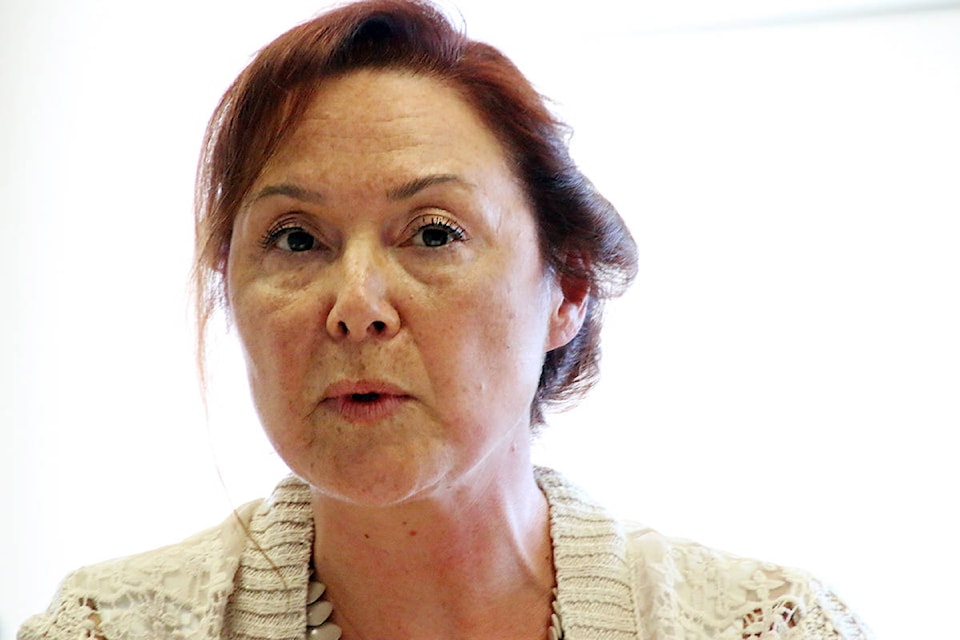Schools superintendent Robyn Gray addressed concerns that parent advisory councils (PACs) are being asked to fund sex education in Cowichan Valley schools.
At the school board meeting on Tuesday, May 7, she presented a report prepared by associate superintendent Sheryll Koers about how teachers are delivering the new Physical and Health Education curriculum (PHE).
“Concern was being raised around the sexual health component of the PHE, in that were funding outside presenters to ‘teach’ sexual health. In some cases PACs were initiating the hiring and in other cases teachers were asking PACs to fund the hiring of outside presenters. There was confusion as to whether the hiring of outside speakers was supplemental in nature and complementing what was being taught or [if] the presenters were in fact teaching the sexual health curriculumm,” she said.
Checking back, Gray discovered that this became a topic of discussion at two district parent advisory council (DPAC) meetings.
“On Jan. 22, 2019 DPAC brought it up at the advisory committee meeting. When the advisory chair [Trustee Elizabeth Croft] presented a verbal summary of the January advisory meeting at the Feb. 5 open board meeting, the following motion was approved:
“Moved by Trustee Croft seconded by Trustee Kemmler ‘That the Board of Education of School District No. 79 (Cowichan Valley) request that staff provide a detailed report on the status of the delivery of Sex Health Education in our schools’.”
Gray explained May 7 that, like the previous curriculum, the new PHE has primary students learning how to correctly identify body parts, including genitalia and sexual organs. Primary and intermediate students also learn about recognizing and preventing abuse.
By Grade 4-6, students are continuing to learn about the bodily changes associated with puberty, and about human reproduction. AIDS and other sexually transmitted infections are also dealt with in later intermediate grades, along with a direct reference to sexual orientation. Students in the secondary grades are taught about sexual decision-making and consent.
“Classroom teachers are responsible for delivering the new PHE curriculum. No provisions for opting out of any provincial curriculum exist, including the sexual health education content found in PHE. Alternative delivery remains available as an option that parents can choose, but schools still have the responsibility of assessing the learning of each student for all aspects of the curriculum,” Gray quoted from an article by Glen Hansman in Teacher magazine.
At present, she said, “in Cowichan, all teachers are teaching the sexual health component of the PHE curriculum. In elementary, it is being taught by either the classroom teacher or another teacher in the school. In secondary, it is being taught by teachers within various courses, such as Health and Career, PE, CLE (Healthy Relationships), and Science 12.”
The sexual health component is also being supported through a variety of sources, such as school counsellors, small group informal conversations, and various programs.
“Many of our elementary schools also supplement with an outside presenter such as Kerrie Isham or Pam Richard. In secondary, they also supplement with support groups such as Cowichan Valley Youth Services, Cowichan Violence Against Women, Community School Nurses, VIU Student Nurses and at times with presenters,” Gray said.
Schools also use a wide variety of resources such as books and online information, she said.
“The Nanaimo Ladysmith School District has created a sexual health website, ‘Grade by Grade: What to teach’, that is frequently accessed by many of our teachers. It can be viewed at https://sexual-education.sd68.bc.ca
“There are also other websites such as Healthy Schools BC that have teaching resources for teaching sexual health - https://teachingsexualhealth.ca. The Public Health Nurses from Margaret Moss have also created kits that teachers are welcome and encouraged to borrow from them.”
In addition, the teachers’ union is also working with the district, with an eye to enhancing the resources available.
The teacher’s professional development committee also typically hosts a sexual health workshop each year as part of their May Professional Development Day, Gray said, adding, “Some of our schools are also working with Kerrie Isham to host ‘train the trainer’ learning sessions that support teachers in building their confidence and expertise in teaching this curriculum.”
The schools superintendent finally reiterated that, “The District and the Cowichan Valley Teachers Federation are working together to support and build professional capacity with all of our educators. The BC Teachers’ Federation have made it very clear that it is the responsibility of teachers across B.C. to teach the sexual health component of the curriculum.”
Guidelines for Implementation of Sexual Health Education, that the BCTF put out in 2018-19, is also available at https://bctf.ca/uploadedFiles/Public/SocialJustice/Issues/LGBTQ/SexualHealthEd-Guidelines.pdf
